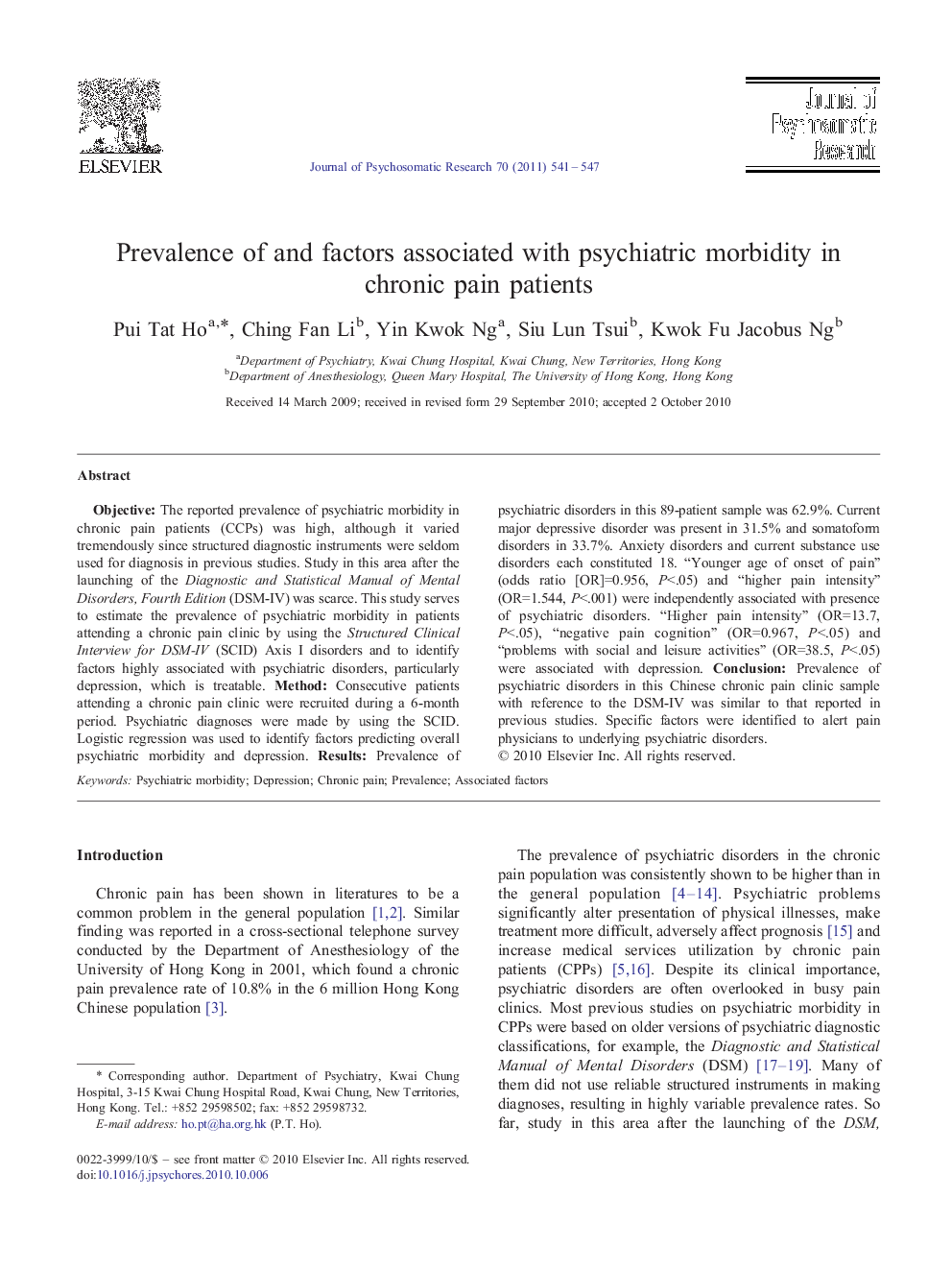| Article ID | Journal | Published Year | Pages | File Type |
|---|---|---|---|---|
| 949773 | Journal of Psychosomatic Research | 2011 | 7 Pages |
ObjectiveThe reported prevalence of psychiatric morbidity in chronic pain patients (CCPs) was high, although it varied tremendously since structured diagnostic instruments were seldom used for diagnosis in previous studies. Study in this area after the launching of the Diagnostic and Statistical Manual of Mental Disorders, Fourth Edition (DSM-IV) was scarce. This study serves to estimate the prevalence of psychiatric morbidity in patients attending a chronic pain clinic by using the Structured Clinical Interview for DSM-IV (SCID) Axis I disorders and to identify factors highly associated with psychiatric disorders, particularly depression, which is treatable.MethodConsecutive patients attending a chronic pain clinic were recruited during a 6-month period. Psychiatric diagnoses were made by using the SCID. Logistic regression was used to identify factors predicting overall psychiatric morbidity and depression.ResultsPrevalence of psychiatric disorders in this 89-patient sample was 62.9%. Current major depressive disorder was present in 31.5% and somatoform disorders in 33.7%. Anxiety disorders and current substance use disorders each constituted 18. “Younger age of onset of pain” (odds ratio [OR]=0.956, P<.05) and “higher pain intensity” (OR=1.544, P<.001) were independently associated with presence of psychiatric disorders. “Higher pain intensity” (OR=13.7, P<.05), “negative pain cognition” (OR=0.967, P<.05) and “problems with social and leisure activities” (OR=38.5, P<.05) were associated with depression.ConclusionPrevalence of psychiatric disorders in this Chinese chronic pain clinic sample with reference to the DSM-IV was similar to that reported in previous studies. Specific factors were identified to alert pain physicians to underlying psychiatric disorders.
